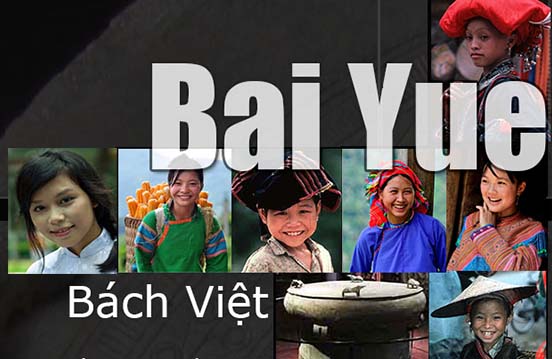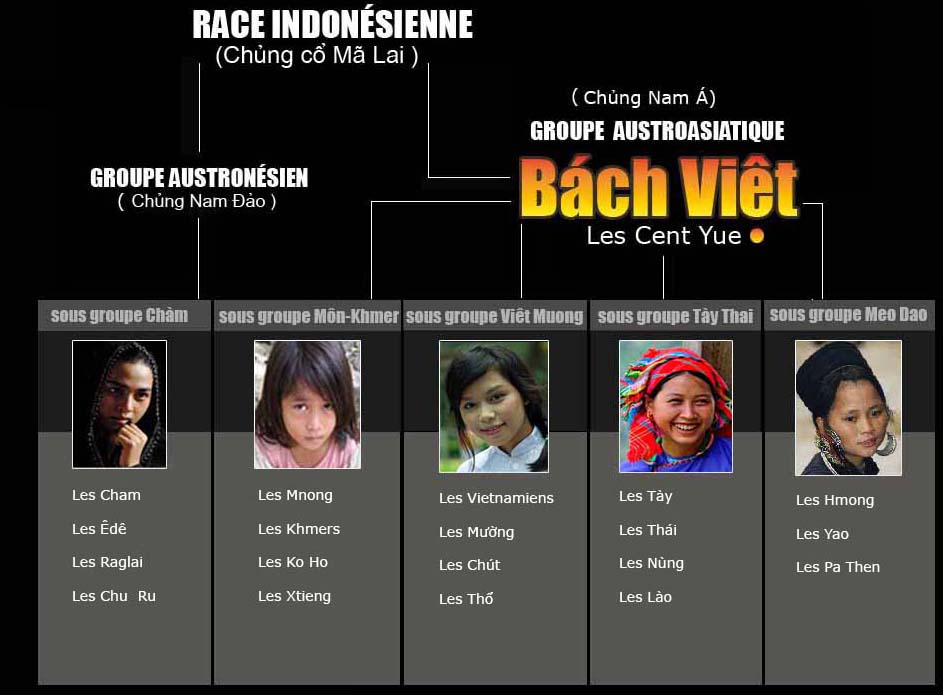
The Bai yue were probably the heirs of Hoà Bình culture, a discovery extremely important from French archeologist Madeleine Colani in the Hoa Bình province (Vietnam). They were a people of skilled farmers: They grew rice on burned land and flooded fields and raised buffaloes and pigs. At the time of the first contact with the nomad folks from the North of Turco-Mongolian origin, ancestors of the Han (or Chinese) called them by the name of « Yue ». There are people having the habit of using the ax in rice cultivation and in the fighting. The ancestors of the Vietnamese (or the Luo Yue) were part of these Bai Yue, owners of the bronze drums.
The Bai Yue (or Bách Việt in Vietnamese) lived scattered in the south of the Blue River basin (or Dương Tử Giang), from Zhejiang (Triết Giang) until Jiaozhi ( Giao Chỉ )( the northern Việt-Nam today ). They were devoted to rice cultivation and distinguished themselves from Chinese people accustomed to cultivate millet and wheat. They drank infused water with the leaves of a plant known as « tea » they gathered in the forest. They liked dancing, working while singing and alternated their reply in the songs. They often disguised themselves in the dance with leaves and plants. They were found at that time in the current provinces of Southern China: Foujian (Phúc Kiến), Hunan(Hồ Nam), Guizhou (Qúi Châu), Guangdong (Quảng Ðông), Jiangxi, Guangxi ( Quảng Tây), Yunnan (Vân Nam) and in the northern Vietnam today.
Bronze drum shown in Guimet museum (Paris)
![]()
Characteristic features of the Bai Yue
1°) The practice of cutting hair short and tattooing.
2°) The construction of houses on piles ( construction Ganlan ).
3) Dress in loincloth and turban.
4) Blackening or grinding front teeth ( canine teeth )
5) Eating clams and amphibians in diet.
6) Bronze casting and using bronze drums in rituals.
7) Foretelling future using bird bones
8) Totemic cult (birds, reptiles and amphibians)
9) Practice burying on cliffs
10°) Greater involvement by fathers in their son’ birth and education and the return of the woman in rice acitivities.
11°) A highly developed technology of weaving
12°) Intensive use of small boats and expertise in the art of maritime warfare.

Đại tộc Bách Việt
